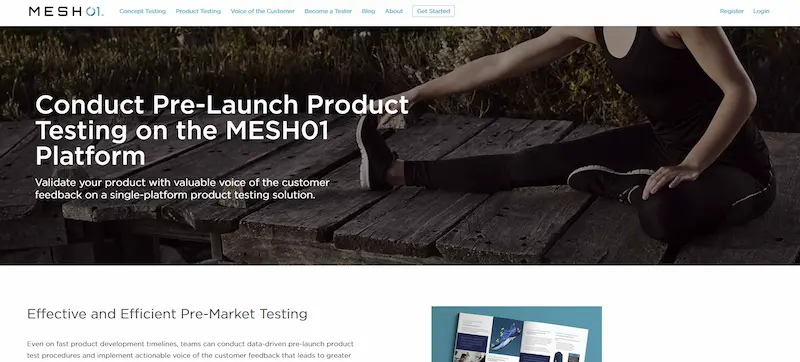
TL;DR
- Sketching is a crucial skill for designers, enhancing creativity and problem-solving.
- It helps communicate ideas quickly and clearly in the design process.
- Nick Huber from MESH01 shares insights on why sketching remains essential for designers today.
- The interview offers practical tips for improving your own sketching abilities.
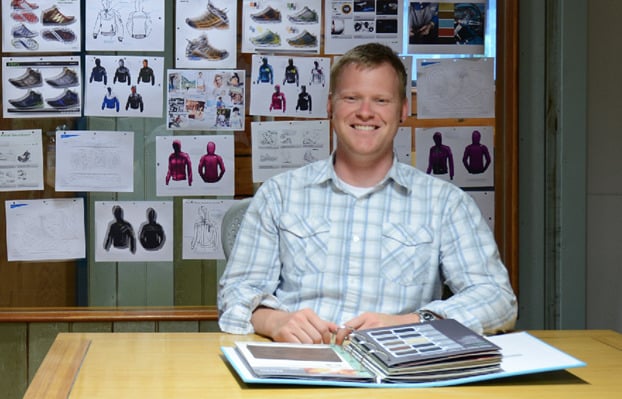
- TL;DR
- Why sketching is so important for a designer?
- The Power of Sketching in Design
- How the Design Process Works at MESH01
- Beyond Sketching: Essential Skills for Designers
- The Role of Inspiration and Storytelling
- What Brands Look for in a Designer
- The Universal Language of Design
- 4 Tips for Aspiring Designers
- Final Thoughts
- LEARN MORE ABOUT:
- Podcast transcript: NICK HUBER x CHOU-TAC
- “Whether you are a student or a senior Designer Mesh01 is, first of all, looking for great ideas”
- ”The designer who has strong sketching skills who can put their ideas down the quickest has obviously an advantage.”
- “The designers will take feedback on their sketches.”
- “Photoshop and Illustrator are skilled designers have in addition to sketching.”
- “3D is certainly a skill that can benefit designers.”
We have today the privilege to receive Nick Huber, who is the Director of Design and Community at Mesh01.com.
We talk about the importance for designers to learn how to sketch and the benefits of communicating your ideas visually.
Nick is constantly in relation to the brands as at Mesh01, they organize design competition with real clients, where designers can submit their design proposals to the brands.
The selected projects receive direct feedback from the pros. So the participant gain exposure, get paid and for the winner a prize! Ultimately, participants may get an opportunity to be hired by the brands themselves.
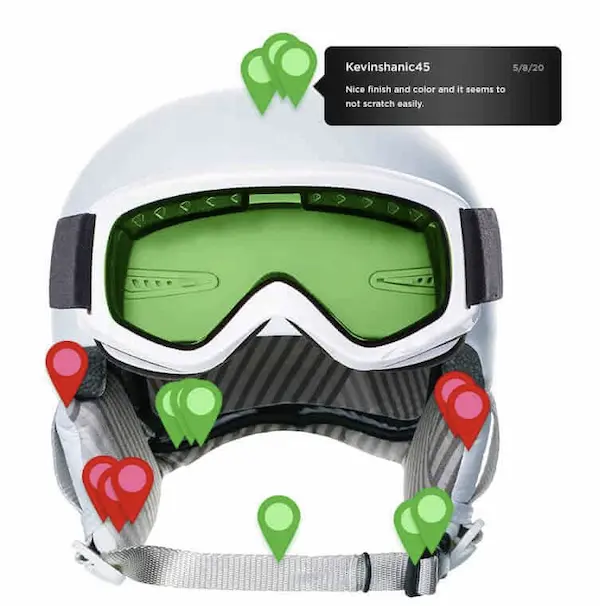
What I appreciate most about Nick’s approach is that his mindset can be found in design teams around the world, regardless of the country.
We have a lot to learn from him.
I’ve personally encountered all the situations he describes throughout my career—from designing footwear at Adidas, to working on cars at Daihatsu in Japan, and collaborating with Absolut BETC Design in France.
Design truly is a universal language, with methods and processes that transcend cultural boundaries.
If you speak English and are passionate about design, the world becomes your playground! 😀
If you found this interview helpful or inspiring, feel free to leave a comment or send me an email. I’ll be happy to pass your messages along to Nick.
Why sketching is so important for a designer?
Nick gives us also precious advice about how a student or junior designer can rise his chance through his ability to sketch to be spotted and get hired by the brands.
The Power of Sketching in Design
Nick Huber, Director of Design and Community at MESH01, emphasizes that sketching is a designer’s most powerful tool. Whether you’re a student or a senior professional, the ability to quickly put ideas on paper is crucial.
In design competitions and real-world projects, brands are looking for rough ideas in the initial rounds, not polished renderings. Designers who can sketch rapidly have a clear advantage—they can submit more concepts, iterate faster, and stand out from those who rely solely on digital tools, which are often slower for early ideation.
“The designer who has strong sketching skills who can put their ideas down the quickest has obviously an advantage.”
How the Design Process Works at MESH01
At MESH01, the design process typically involves multiple rounds.
The first round is all about rough sketches and big ideas. Selected designers then refine their concepts, often using digital tools like Illustrator, for the second round. Only those with strong initial sketches advance, highlighting the importance of being able to communicate ideas visually from the start.
Beyond Sketching: Essential Skills for Designers
While sketching is foundational, Nick notes that designers are expected to have additional skills such as proficiency in Photoshop, Illustrator, and increasingly, 3D software. Brands are requesting 3D skills more often, especially for product categories beyond Nick’s footwear background. However, the core skill that opens doors remains the ability to sketch and communicate ideas clearly.
The Role of Inspiration and Storytelling
Inspiration can come from anywhere—nature, other products, or even unrelated fields. Nick encourages designers to seek out diverse sources and incorporate them into their stories. A compelling narrative behind a product not only helps sell the idea to brands but also creates a stronger connection with users.
“A product that has a story connects so much stronger with the user.”
What Brands Look for in a Designer
Nick distills the essentials into three key attributes:
- Story: The ability to create and communicate a compelling narrative.
- Research: Continuously learning and understanding new markets and user needs.
- Sketching: Translating ideas from mind to paper quickly and effectively.
He also advises students not to worry if some portfolio projects are unfeasible; what matters is demonstrating creativity and an understanding of the design and manufacturing process. Brands want to see designers who push boundaries but also know how things are made.
The Universal Language of Design
Nick and Chou-Tac Chung agree that design is a universal language. The methods and mindsets found in leading companies are similar worldwide, making design a truly global field. If you can communicate your ideas visually and speak English, the world is your playground.
4 Tips for Aspiring Designers
- Practice sketching like taking notes: Don’t worry about perfection in early sketches—focus on capturing ideas quickly.
- Show your process: Brands want to see how you think, not just the final result.
- Try different things: Sketching unrelated products can improve your core design skills.
- Keep learning: Stay curious and keep refining both your creative and technical abilities.
Final Thoughts
Nick encourages designers to step out of their comfort zones and participate in diverse projects. Whether you’re into sports goods or other product categories, platforms like MESH01 offer opportunities to learn, grow, and get noticed by top brands. Remember, even the best designers produce “ugly” sketches before arriving at great ideas—embrace the process and keep sketching!
LEARN MORE ABOUT:
NICK HUBER: Nick Huber Design
MESH01: The Product Testing Platform | MESH01
Podcast transcript: NICK HUBER x CHOU-TAC
CT:
Today we meet Nick Huber who is Director of Design and Community of MESH01:
- An online platform that connects designers to the brands through a Design competition.
- Besides that MESH01 offers product testing service to brands such as Adidas, Burton, Nike, Under Armour…
“Whether you are a student or a senior Designer Mesh01 is, first of all, looking for great ideas”
Nick, sharing about the Design competition:
- The way we do our projects – we do multiple rounds of design selection – In the first round of design, what we are looking from designers is the rough ideas. We are interested in the idea not that the designer spends a lot of time at work.
- So the quickest way to get your ideas out is sketching. The designer who has a strong sketching skill who can put their ideas down the quickest has obviously an advantage.
- Because they can submit multiple ideas – compared to people who rely on computers – that takes a lot more time.
- They may take longer to make the same amount of work. Because the designers who work for the 1st round don’t get paid yet, we don’t want them to work for long hours.
”The designer who has strong sketching skills who can put their ideas down the quickest has obviously an advantage.”
- Anything that can facilitate speed is a good thing.
- And a great thing about a good sketch is not only about making a sketch fast but is really good at telling stories. It’s actually frequently better than a computer rendering.
- So obviously if the designer can improve his sketching skills, it makes them much stronger for the first round for our projects.
CT:
- How many rounds are usually needed?
“The designers will take feedback on their sketches.”
Nick:
- Most of the time it’s 2. Sometimes it’s 3.
- The first round we are looking for rough ideas, we will review the design with brands, and the brand will narrow down to 3 or sometimes more. The designers will take feedback on their sketches.
- And then they will take them back through the second round on something more refine like Illustrator or something they can take to the factory.
- You know you don’t get to that round if you don’t have good ideas in the first round. That’s why sketching is so important.
CT:
- I guess there is a big selection made for this second round.
Nick:
- Yeah, all the designers who make it for the second round are expected a lot of work for this round and get paid for that work.
CT:
- Ah ok! And the one who will be selected at the end of this second round will get the competition prize.
Nick:
- Yes.
CT:
- What if the participants don’t know how to use Illustrator? Is it something you guys cover or teach him?
“Photoshop and Illustrator are skilled designers have in addition to sketching.”
Nick:
- We will work with him on that, but generally, most of our designers – Photoshop and Illustrator are skills they have in addition to sketching. So we generally expect better designers to have it. But obviously there is varying level or abilities. But they are programs I have a lot of experience so I work with designers if their skills are little lacking – to make sure their designs can be executed.
CT:
- How about 3D software, is it something you think important as well?
Nick:
- It’s coming more and more. We are starting more and more requests from brands we work with to get 3D.
“3D is certainly a skill that can benefit designers.”
- My background is from Footwear design, and so I used to know how to use 3d in college but professionally I never used 3d for footwear. Personally, that skills are faded.
- But for other types of products, we do frequently have brands looking for 3d. So it’s certainly a skill that can benefit designers to have.
CT:
- So you guys are working with emerging and leading brands such as Under Armour, Adidas, Burton, Nike. I saw that Mesh01 also test the products?
Nick:
- Yes. We have two aspects of the business. We have the design side where I work primarily, and we have also the product testing. We work with a lot of brands to – before a product hit the market, it has to run through a test.
- There is the lab testing where we can test the abrasion and the wearied material – also getting the product on the athlete and getting the feedback on how it feels on the running – or like a jacket how does it feel on the humidity on hiking, or other activities being tasked to do and put the products on users and provide the feedback from these users.
CT:
- Do you think for designers, for example, Nike or Adidas, is it needed to be a great player for these types of sports to make good products?
“You need to know how to talk to athlete to create products that meet their needs.”
Nick:
- Mmmh… Definitely having played the sport can certainly be an asset for the designer. But I don’t think you need to be a great Basket ballplayer to design great basketball products. You don’t have to be a great soccer player to design great soccer products.
- But you need to know how to talk to the athlete who is participating to these sports and getting good ideas of what their needs are.
- Because at the end of the day that’s what we are doing. We are creating products that meet the needs of the user.
CT:
- For people who are not really into design, their first top in mind is designers are about making things beautiful more artistic.
“Making things that looks better and works better that’s Industrial design.”
Nick:
- Certainly there is a lot of products designed to look pretty. But those fashion things.
- But making things that looks better and works better that’s Industrial design. I like to make the aesthetic reflect the function of the product.
- You know my background is from footwear design – It’s all about some new cushioning techniques or whatever it is – I want this aesthetic to reflect that this shoe has the best cushioning, I want it to work like a cushioning shoe. Or if the shoe is about Ankle stability, I want it the aesthetic to reflect that.
CT:
- How do you find inspiration to translate all these things?
Nick:
- Inspiration can be anywhere. There is a lot of go-to for designers, and there is one I use is walking.
- For occurrences in nature, we are never the first to do anything. The things you are working on there are things similar in the past. – whether it’s something in nature, like camouflage on a bug. There are examples that occurred before.
- It’s always good to see what is out there. If you are designing a product you are not necessarily looking at the same type of products in the market, but other products and see how other people have solved this type of problem, how nature has solved these problems in the past.
CT:
- When you present your projects to the brands, do you show all these inspiration as well?
“A product that has a story has a stronger connection with the user”
Nick:
- Absolutely, inspiration is very important. Really what you are trying to do is you are selling a story – and inspiration equal to the story. You know it’s all about marketing. A product that has a story connects so much stronger with the user.
- And some time for inspiration you may have initial sketches about other things that aren’t part of that story as well.
- At the end of the day, your work is shown to the brand, what is the thing that will make your work stand out? The best way is obviously to have quality designs.
“Stories are great because they cause an emotional attachment.”
- But there is a lot of quality designs, so to make your design stand out from the other great design is to convey a story. Stories are great because they cause an emotional attachment. When you get emotionally attached, your attraction to it gets stronger.
CT:
- I receive a lot of questions from a student about portfolios and presentations.
Do you have any tips?
“Let them know you are a good design thinker.”
Nick:
- I think Story – that what we have just talked about. I mean story is so important because in a portfolio you really kind of presenting a couple of things:
- First, the brand wants to see your skills. How talented designers are you?
- But they also want to understand your thought process – how did you arrive at this design – you know if they are looking to hire you – they are not hiring you because of the work that you have down there – but because of the work, they think you are going to do. By seeing your ideas, your process, and your story, let them know you are a good design thinker.
- What you have put on the paper, you will be able to replicate under there empowerment and create a great design for them
CT:
- So they are looking for potential?
Nick:
- Exactly, I think you have a post about this. There are a lot of designers who are afraid to put there works out there because they are afraid to be copied.
- And while it’s a possibility they are also having a failure as well by not showing there work. As I said, you have to show your work that people can see what you have done, capable of.
- But the reality they are not hiring for the design you have made 5 years ago – that design shows your ability to create a great design next week, next month, next year. That’s what they are interested in, what you are going to for them.
CT:
- What’s the benefit for brands to look for projects form young designers? Is it risky?
Nick:
- It’s not just about connecting young designers with the brands. It’s about connecting designers in general – whether the designer is fresh out of school, 2, 3, 5 years of experience or 20 years of experience. What the brands are ultimately interested are Good ideas. Good ideas are what wins.
- Whether the good ideas come from the young designers or designers with 20 years of experience.
“Good ideas are what wins.”
- If you are applying for a job or if you are looking for freelance let’s say – and you have a year or two of experience but there is someone else with 10 years of experience – the brand will probably go to that designer because of there experience.
- But that doesn’t mean that their ideas are better than yours as a young designer. And sometimes some young designers can break some of the rules and come up with very innovative stuff. We are about leveling that playing field. If you got good ideas, we don’t care if you are fresh out of school or 20 years of experience. It’s a good idea that we are interested in.
- Now with our process, there is a lot of time that brands select the good ideas that younger designers maybe don’t have the experience or technical background to make that designed reality but we do have the experience and technical background. So we will work with that designer and the brand make sure they are great ideas that can be executed.
- The brand want don’t want pretty pictures, they want functional products that they can produce themselves. So we will work with the young designers to make sure their products can be produced and sold. There is so many designers who can gain from this learning experience. But again, at the end of the day, it’s all about the good idea rather than the experience.
CT :
- Actually what is surprising me is let’s say Nike or Adidas that are big brands already have there own product testing department. What are the reason why they come to see you ?
“The brand don’t want pretty pictures, they want functional products
they can produce.”
Nick:
- Yeah a lot of bigger brands do have these processes internally, but one thing is actually surprising to see how many brands do not have a process for testing their products. So we work with them to implement. We got a whole web platform that we develop. Even if the brands have their own process – some still do things kind of old school. Where they send the product to the tester, the tester will wear the product, they file a form or send an email. It’s a slow process.
- While with our platform, they are not mailing any sheet of paper. They are filling as how they use the product, they are giving feedback on it .
“I’ve got the product today, I went out for a 5-mile jog. Here is how it fit”
You are getting the information immediately. Which gives the prior testing to the brand.
“We have noticed that you have sent this, can you take a picture of that, or elaborate more on that ?” - So brands are able to identify if there is an issue with a product that they try to identify much faster. And then our feedbacks for the product are displayed in very beautiful graphs and reports that are generated instantaneously. Where traditionally, they are looking at excel spreadsheets and spending days generating the reports although our process is about “Push the button”.
CT:
- So you guys have software to combine all the data and make them very easy to read for the brands. And I guess you guys are also giving recommendation of the action to take from there ?
Nick:
- Yes, we can certainly do that as well. A lot of times we are just generating the feedbacks from the users. But if they are looking for recommendation we can do that as well.
CT:
- If the company is from Asia or anywhere in the world, is it a problem for you guys ?
Nick:
- No, Not at all. We work with a lot of international brands and even American brands that are serving the world. So we have to be able to work with the brands all around the world. We are based at Portsmouth, Hampshire – but we are an online platform, so basically we just need to be connected to the internet – everyday everyone is.
CT:
- Let’s go back for the students.
Nick:
- Sure.
“We have designers
who have started to work with us
as students and get hired by brands”
CT:
- You community is connecting the designers to the brands – that might have created a lot of proposals of internship or job I guess
?
Nick:
- Yeah, we have quite a few designers who have started to work with us as students and ultimately get hired by brands. When these designers are working internally will come to us and these brands will come back to us for more projects – and also designers who are working as a freelancer we got the project for them. We see a lot of designers who kind of go from students to professionals who are still working with us.
CT:
- If there is 3 things a designer needs to have to be noticed by the brands ? Is there anything you would recommend?
“Story + Research + Sketching are the 3 most important things”
Nick:
- Yeah I think that Sketching is incredibly important
because as designers this is how we convey our ideas. It’s how we get our ideas from our heads down the paper. So if you can’t put your ideas out on the paper, you have a serious disadvantage, to begin with. So sketching is very important. Brands want to see how designers think. There are no better ways to see that on how they sketch.
- From there, you need to have the ability to do research. As an Industrial designer, we are sort of eternal students. You always need to be learning. Most of the time you are gonna be design products that are not for your demographic. If you are a 28-year-old guy, most of the product might not gonna be for other 28 old year guys.
- You might be designing for a 13 years old girl, you might be designing for 16 years, old men. So you need to be able to do the research to understand what consumer means and what they want. Because if you can’t create products that they are interested in then it’s no good. SO the ability to do research is very important.
- Then there is the ability to tell a story. At the end of the day, your product is gonna go on the shelve next to dozen or even hundreds or thousands of similar products. When a consumer goes into the store, they don’t know you, they might not even know the brand. So what is it that going to make them spend there hard earn money on your product versus the product next to it is that a lot of time is your ability to convey a story with your product.
So the story, research, and sketching are probably the 3 most important things.
“In your portfolio, you should be promoting your own personality.”
CT:
- How about the designer’s own personality?
Is it something you think he should promote as well?
Nick:
- In your portfolio absolutely. You should be promoting your own personality. If you got an interesting style that the brands are interested in, and ultimately, when you work for brands, you need to convey the brand personality, the brand style in your product. But the product you sell in the portfolio is you. You need to convey your style, your personality to sell the product that is you to the brand.
CT:
- When yourself was a student – How did you build your own style?
“Stealing is part of the learning process”
Nick:
- You got to start of:
“The great artist don’t copy, they steal.” from Salvador Dali.
I don’t mean in the sense of ripping someone off. It’s part of the learning process. You know, if you want to be a great writer, you need to read. As a designer, you need to try a lot of different styles. If you see styles that you really like, try it. And over time, there in certain aspects that start to stick, and over time, you learn how to create your own style. It will be a combination of these different styles. But you will never develop that if you are not practicing it.
CT:
- So it’s a lot about exploration, experimentation and sees what’s work for yourself, and never fear of failing. Because a student’s time is just the best moment to explore new stuff and getting more mature.
“Learn from your failure as much as the successes.”
Nick:
- There is something very freeing about being a student.
Basically when you are in school and studying. The end goal is to develop your skills to get better – and prepare yourself to be a professional. So experiment, try, do a lot of things that may or may not work. Because when you work for a client, you don’t have that luxury. The client pays you so they need what you have done to be a success. Learn from your failure as much as the successes.
“Obviously you want something in your portfolio that pushes the limits.”
CT:
- Is it ok if the project if the students in the portfolio are not feasible, like too costly or impossible to make? Does it matter for the brands?
Nick:
- Obviously you want something in your portfolio that pushes the limits.
As a student, you are going to have a lot of stuff that simply can’t be made and can’t be manufactured – because you don’t necessarily understand the manufacturing process. That’s ok, but if you show that you understand the manufacturing process, and how the product is made. - If you have a product in your portfolio that really shows your understanding of the manufacturing process, it put you ahead of the other designers. You need to convey creativity.
“As a student you try to become an industrial designer, not a fine artist.”
- As a student, you try to become an industrial designer, not a fine artist. It’s not about coming up with a pretty picture. The pretty picture ultimately have to be a working product, and so you need to show the technical knowledge. Its that’s just as important.
CT:
- Thank you for all your information, is there anything else you want to share?
Nick:
- Keep check-in in Mesh01.com, we are constantly posting new projects.
So check it out today, if there is not any project interesting on to you, come back take a look next week, maybe there will be a project it is. Get out there and try a project that is outside of your comfort zone and have fun!
“Sometime it’s drawing a piece of furniture that make my shoe design better.”
- It’s good to try different things. I am a footwear designer, and I like to sit around and draw shoes. I draw shoes all day long. But sometimes it’s drawing a piece of furniture that makes my shoe design better or drawing a totally unrelated product. The knowledge, the learning of designing other products, you can then bring it to your field and it’s just made better.
CT:
- Mesh01 is more into sports goods, but designers who are not into sports goods are invited to participate as well?
Nick:
- The product we are working on is not just for sporting.
If you go to the website right now, there are 3 projects that we are currently running. One is certainly a sports product, it’s a hydration pack for endurance athletes who carries water with them. That’s a strong sporty good, But we also have a project to do with children snowshoe – they walk on the snow and leave a fun footprint on the snow behind. – That’s a little sporty. - Last week we had a project to design snowballs. The kid could play outside in the snow could use these forms almost like a sandcastle form to create an object with the snow.There is a variety of projects.
- The whole idea is: Have fun, get creative, and see what you come up with.
CT:
Thank you very much.
Nick:
- At the end of the day we are trying to create opportunities for designers. We primarily use a crowdsourcing model, and because of our community, we also use our base freelancers as well. Not every project is conducive to the competitive model.
“Sketching is like working out. If you want to stay strong, you got to keep going to the gym.”
CT:
- I would like to ask you. My blog target the students. And I am wondering if there is a lot of professional who wish to have better drawing skills?
Nick:
- Absolutely, That’s personally part of the reason why I started following your blog is that sometimes as a professional – I myself sketching less and less. Just like anything, that’s a skill that you use it or you lose it. I start to see some sketching skills start to fade. It’s like working out. If you want to stay strong, you got to keep going to the gym.
I started to follow your blog for selfish reasons.
- It’s inspiring, it cause me to start sketching more. So I try to make it a conservative effort to sketch every day. When you are a student you think that when you are professional you are going to keep drawing every day, unfortunately, that; so not the reality. At the time I am spending more time in a meeting. Where I found myself doing very rough like thumbnail sketches.
“The article about Ugly sketches is inspiring and kind of helping me to get back to sketching.”
- You have a post the other day about sketching ugly.
I really like that post because the ugly sketches are about what I would do and I would bypass the pretty sketches and goes straight to Illustrator. As a footwear designer, I am generally working with a lateral view of a shoe, or sole view. I am not showing too many of the flashy three-quarter views that you might do as sketches. So I am going straight to Illustrator and bypass the pretty sketches. - But maintaining this ability to sketch and tell the stories. It’s kind of inspiring and kind of helping me to get back to sketching.
CT:
- What you say is very cool because what drives you to sketch more is the phase of the Ugly doodles. And usually, this is what the students want to skip. They want to get the most beautiful sketch and struggling to get the best thing in one shot. And for you to have more experience, you are looking at the first two stages that the students are trying to skip. It’s the inverse situation.
Nick:
- When I talk to the students, I guess the problem that a lot of people have is that if someone is showing his work online, what they are showing you is the pretty product. Even if it’s a sketch, what you are seeing is the best sketch they did. They are not showing all the sketches that are on the way. On the internet, you want to show off what you can do.
“The best way to get quality sketches quickly is to use an underlay.”
- Designers don’t always really understand all the work that went into that act. And all the conversation that I have with design perfect, is using an underlay. Because really, at the end of the day, when I am looking at the designer’s work, I want to see the correct proportion, I want to see a shoe in the proper form. And the best way to do that quickly is to use an underlay. I rather spend 5 min on the sketch using an underlay than 20 minutes to get that same proportion.
Designers think that using an underlay is cheating, but it’s not.
It’s how you get proportion quickly.
CT:
- As you said a designer is not totally like an artist, there is a notion of productivity. Now you are not a student anymore, you may have a family to take care of, you might want to make sure that your time is used in a smart way.
“Sketch like you are taking notes”
Nick:
- That’s exactly right. Sketching serves different purposes.
The one main purpose is getting the idea out of your head on paper as quickly as possible. Because if you don’t you lose the idea or you will lose the next idea. Those sketches, it doesn’t matter how pretty they are. It’s a sorta way of taking notes.
CT:
- Do you write a lot?
“For presentation, more imagery less text is always better.”
Nick:
- When you are doing research, it’s all about gathering information. That’s for you, so do whatever do works best for you. Ultimately when you are presenting to other people, more imagery less text is always better. But in the research phase, that’s for you.
CT:
- Is there anything the Design Sketchbook blog is lacking of?
Nick:
- No, I think it’s really good.
I don’t know where I saw your blog when you first started. I saw within the first month that you started with. I saw people started similar things one month later and then it’s gone. So I love the fact that you are still working and so doing it developing – and the work in there is great. There is a lot to read about.
“We have to draw something that aren’t good to draw stuff that is good.”
- But I think one of my most favorite posts is about the Ugly sketching. I really think that a lot of designers are getting intimidated and they develop bad habits because they only see finish sketches that other designers have done, and they do not understand the groundwork that created that. They just see the perfect sketch.
- And I think that its good to see that even the best sketch has drawn some ugly things. And you have to draw not even like the ugly sketches but you have to draw something that isn’t good to draw stuff that is good.
- I don’t know the process that you do but I assume that I am seeing some videos of your sketches, I assume that you probably sketch a couple of time before. I assume I am seeing the best one.
CT:
- Mmh depends! Laugh 🙂 Sometimes you are lucky sometimes we are less.
Nick:
- You know when you are looking through hundreds of portfolios, you feel like hiring somebody. For our projects, there is a lot to walk through, so how a project stand out from another. Sometimes if you just have the finished rendering, like maybe it just blends in.
CT:
- Laugh … “Too bad !”
Nick:
- I love what you doing, It’s awesome. There is a lot of information and a lot of topics for beginners. I found myself when I was flying up here, and read a couple of articles re-reading through. Keep doing what you are doing and getting pretty good fun.
“Sketching is universal”
- I saw you are trying to convey a message to the students, and I was looking through mutual friends who are also following your Facebook page. There is a pretty good blend of students and professionals. And as you can see which of your friends also like the page, and there are quite a few of my professional’s friends who are following your page. You have quite a few professionals followers. Sketching is universal and there are students and professionals – the way you do it is pretty similar.
CT:
- Hey thank you very much for your time, I really appreciate it and have a great day for your trade show.
Nick:
- Thank you very much.
CT:
- See yah Bye-bye!
Nick:
- Bye.

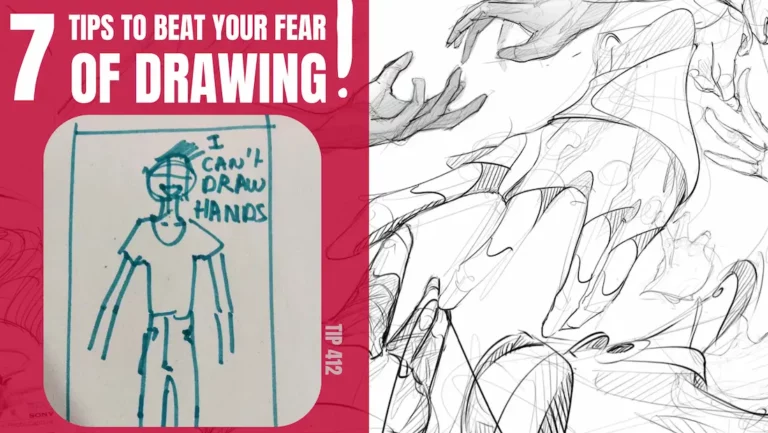
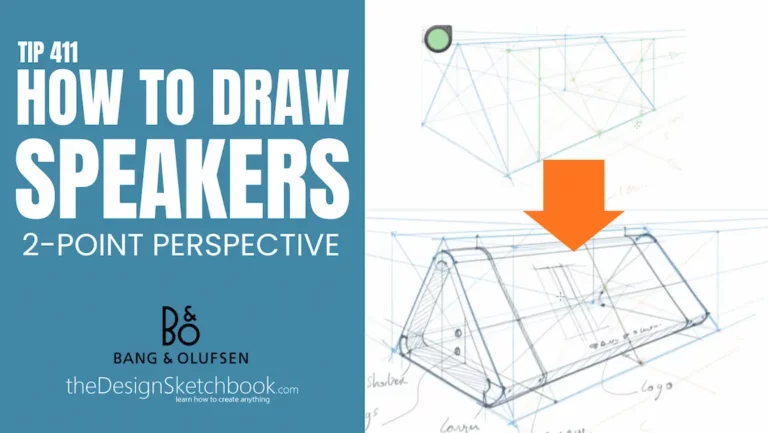
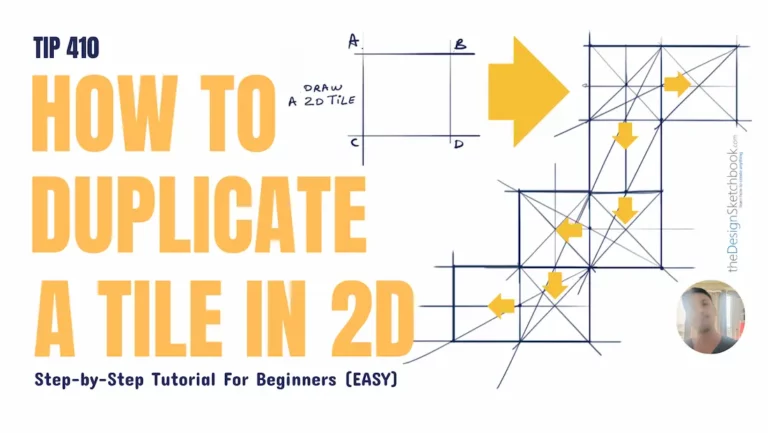
![TIP 409 How Dumb Ideas Make You a Better Industrial Designer [Embrace Disruptive Innovation]](https://www.thedesignsketchbook.com/wp-content/uploads/2025/11/TIP-409-HOW-DUMB-IDEAS-CHANGE-THE-WORLD-2-768x433.webp)
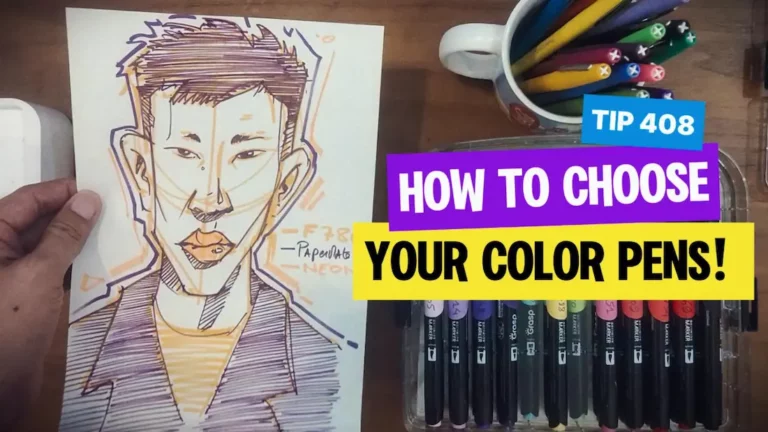
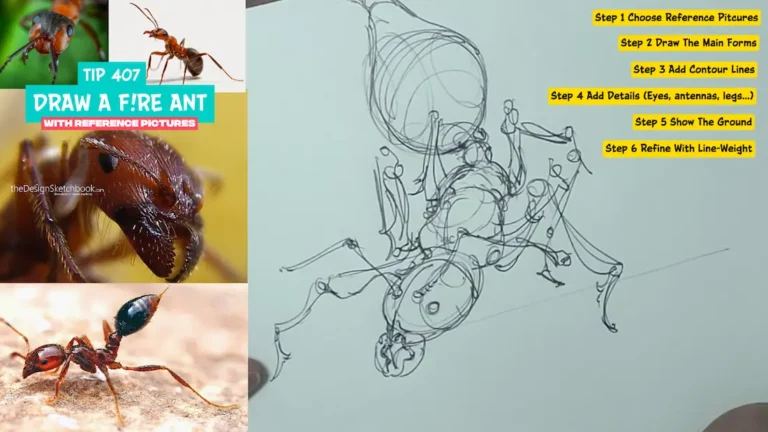
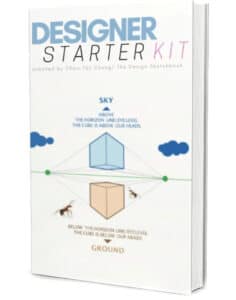
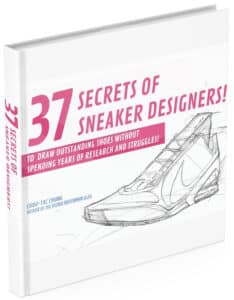

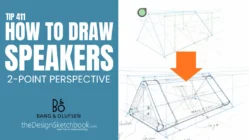
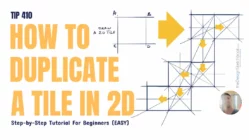
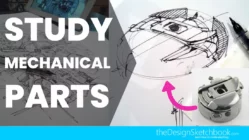

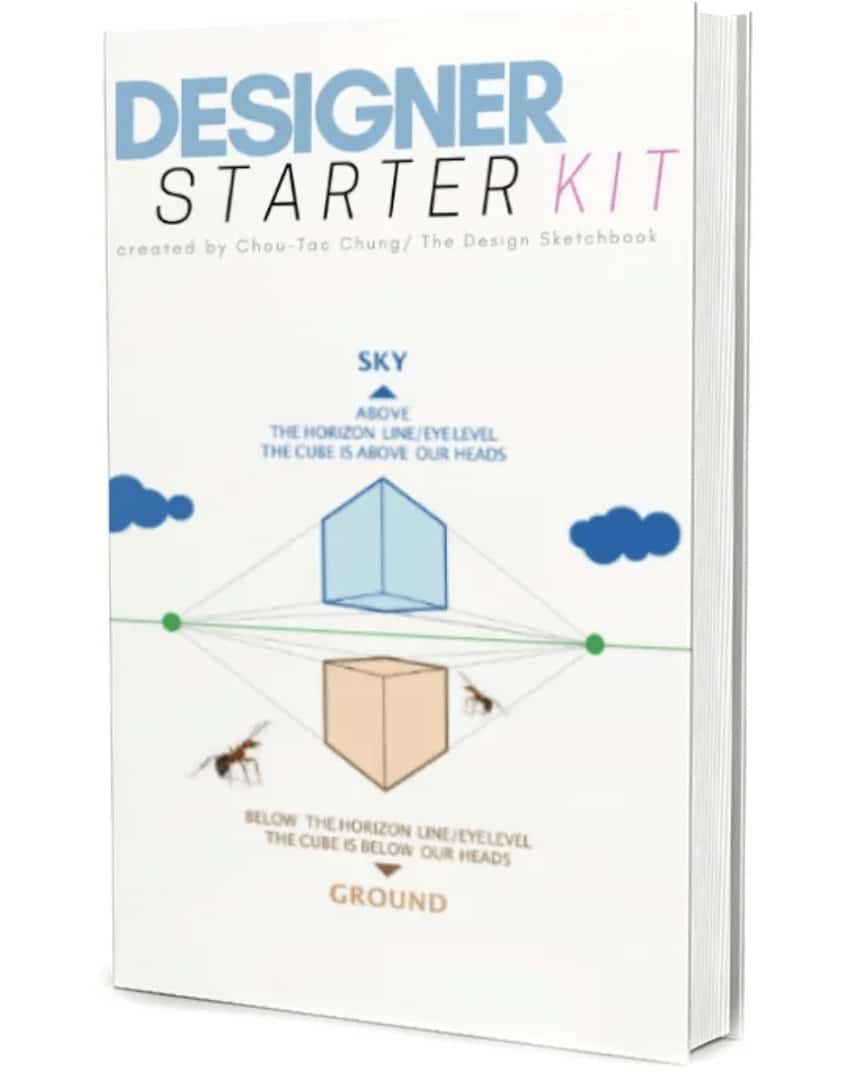


[…] Sketching should be a necessary skill for any designer. […]
Great podcast Chou-Tac!
Loved the content, all the information provided by Nick Huber. Really nice 🙂
And I got to know learn new stuff, one of them the existence of Mesh01 that I didn´t know it existed. So thanks for your hard work in putting this all up and continue the great work you are doing!
Cheers,
Roger Santos
I deeply belive that Sketching is a Universal languge.
My problem ,I can´t afford to pay the fees. Also the Visa Card in Egypt
are from National Banks for local purchse only.
True that some payment card are not international. I guess you may need a help from a friend or relative of yours. : /
Remember that even though you can’t afford to pay for this course, keep going at sketching !
When you are passionate, there is always a solution to improve. Best is to find sketchers to progress together.